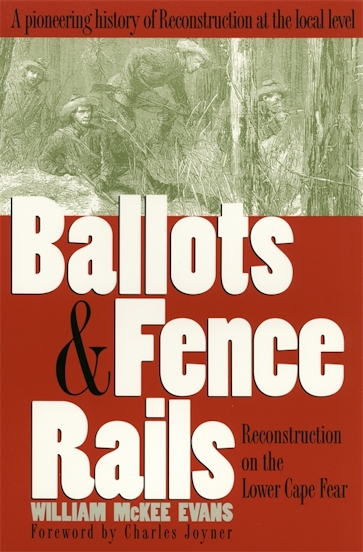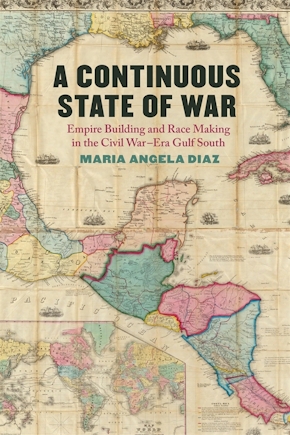Ballots and Fence Rails
Reconstruction on the Lower Cape Fear
Title Details
Pages: 336
Trim size: 6.000in x 9.000in
Formats
Paperback
Pub Date: 01/08/2004
ISBN: 9-780-8203-2384-8
List Price: $34.95
Related Subjects
HISTORY / United States / Civil War Period (1850-1877)
Ballots and Fence Rails
Reconstruction on the Lower Cape Fear
Skip to
- Description
- Reviews
Ballots and Fence Rails recounts the struggle to reshape the post-Civil War society of the lower Cape Fear River in North Carolina, the Confederacy's last outlet to the sea. Focusing on events in the port city of Wilmington and its rural environs, William McKee Evans ranges in time from the region's occupation by Union forces in 1865 to the end of Reconstruction in 1877.
Evans shows that although social change was sought at the ballot box, it was just as often resisted in the streets, with one faction armed with pistols and sabers and another, at one point, armed mostly with fence rails. Drawing on his extensive knowledge of the region, Evans dramatically portrays the conflict as it was viewed by former slaves, southern conservatives, carpetbaggers, and scalawags. Evans also clarifies many generalizations about Reconstruction that are often empty or unsubstantiated, showing that the right to vote cannot alone diffuse political power and that Reconstruction at the local level often differed from Reconstruction at the state level.
First published in 1967, when local history was still viewed as parochial or less important than national history, Evans's work is now considered pioneering. In his foreword Charles Joyner writes that "by seeking the universal in the particular, by pursuing large questions in his small place, William McKee Evans in Ballots and Fence Rails makes an important and distinctive contribution to the historical discipline."
This work is a significant addition to the history of Reconstruction not only in the Lower Cape Fear but in North Carolina as a whole. Furthermore, it is the type of study which needs to be read by the synthesizers of the Reconstruction story at the national level. . . . A substantial, well-documented work which achieves through both style and scholarship the author's purpose of revealing a people and an area at a turning point in their history.
—Journal of Southern History
Brilliantly written . . . The study is a model in researching, writing, and interpreting local history.
—Journal of American History
Ballots and Fence Rails deserves the much-abused designation 'classic.' It is an exemplary study that combines an acute analysis of the dynamics of Reconstruction with a richly textured portrait of a locale, its people, and its history—all accomplished with a fluidity and grace of presentation that only a few professional historians achieve.
—Barbara J. Fields



